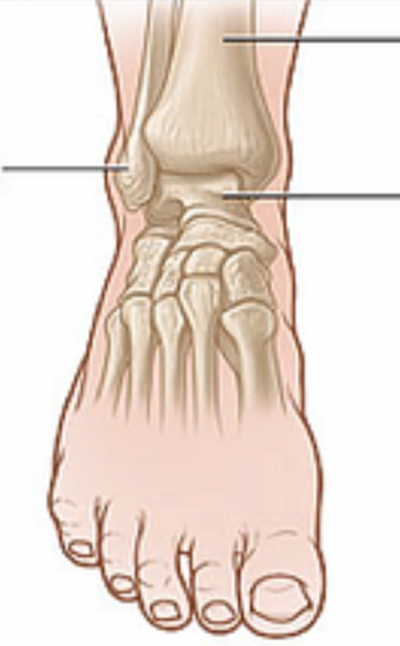Ankle Fractures
A broken ankle is also known as an ankle fracture. This means that one or more of the bones that make up the ankle joint have been broken. There may be ligaments damaged as well.
A ‘sprained ankle’ is a painful condition where ligaments are torn. Whereas an ankle fracture means one or more of the bones of the ankle joint have broken.
The ankle joint is made up of the tibia (shin bone), fibula (small bone on the outside of the leg) and the talus (ankle bone in the foot).
Ankle fractures usually occur after excessive rolling or twisting of the ankle joint, these movements after a jump or fall causing sudden stress to the joint.
Ankle fractures are very common and affect all ages. During the past 30 to 40 years, there has been an increase in the number and severity of broken ankles, due in part to an active, older population.

Symptoms of Ankle Fracture
- Immediate pain
- Swelling
- Bruising (can be extreme)
- Deformity of the ankle joint
- Bone may break through the skin
Diagnosis of ankle fracture
A specialist will take a history of what happened and perform a physical examination. Then an x-ray and often a CT scan for more serious fractures is required. MRI might be needed to look at the soft tissues.
Treatment of ankle fractures
Immediate treatment should involve ice, pain relief and elevation to help reduce the swelling.
Next depending upon the type of fracture it may be manipulated into a better position and placed in a plaster cast, or patients may be given a walking boot to wear. More serious ankle fractures will need an operation. This sort of surgery involves specialised plates and screws to re-align and stabilise the ankle fracture, sometimes a rod inside the shinbone (tibia) is needed.
Ankle fracture surgery is very successful, as with all types of surgery there are a few general and specific risks. Specific risks include difficulty with bone healing and pain from the screws and plates used to fix the fracture. If this is the case some patients choose to have these removed at a later date once the fracture has healed.
Rehabilitation
After ankle injuries there may be a period of time where patients are instructed not to put weight through the joint, crutches will be needed for walking. Physiotherapy exercises are important to regain flexibility and strength after these injuries. Regular x-rays may be needed to monitor the bone healing and ensure the bone ends don’t change position.
Surrey Orthopaedic Clinic Ankle Fracture Specialists:





